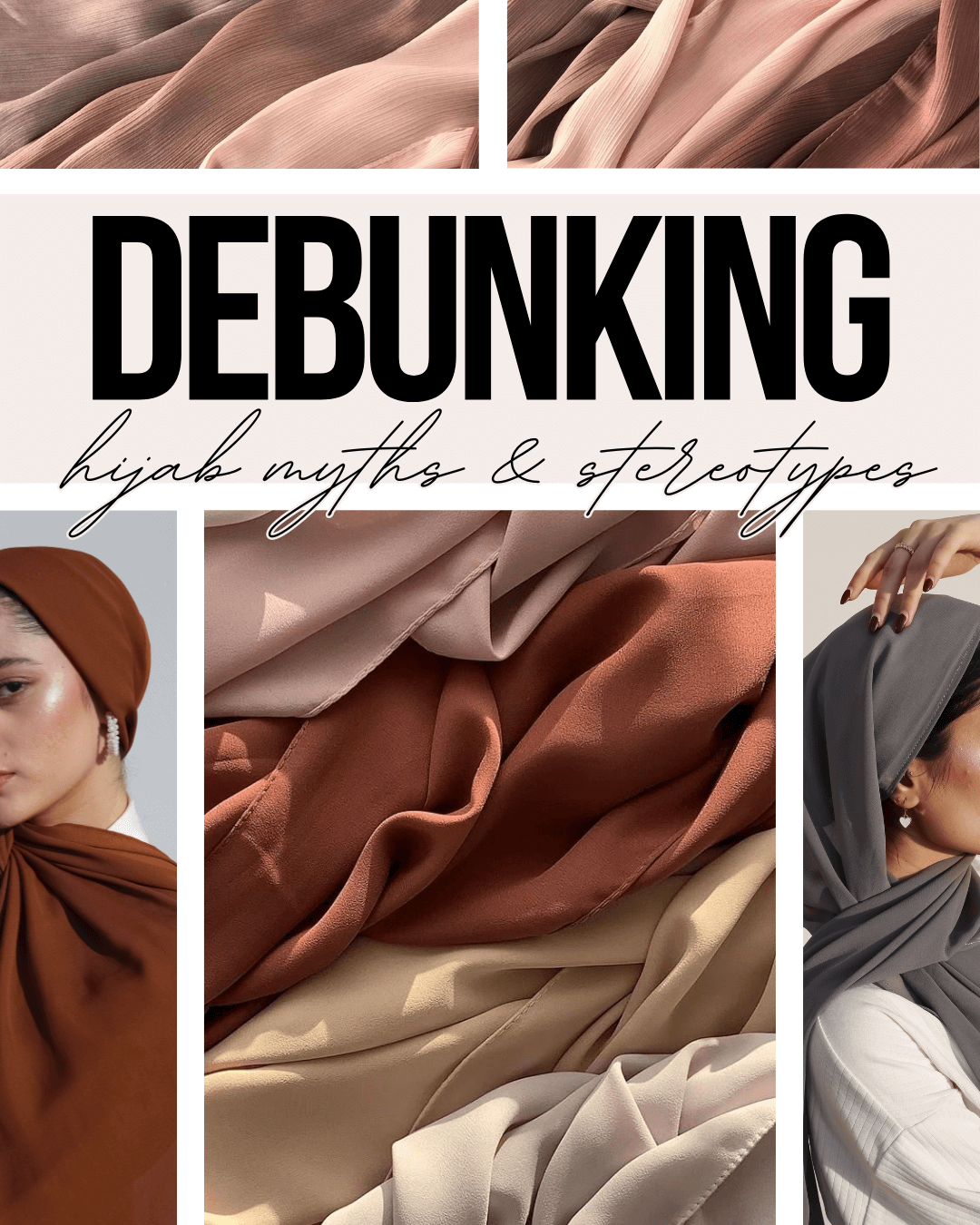In a world that respects diversity, it is important to clear up myths and misconceptions about religious and cultural beliefs. Wearing hijab is one such practice that is sometimes misunderstood. The hijab, a sign of modesty and religious identity for millions of Muslim women worldwide, is sadly covered in misunderstanding. Let’s debunk some of the most frequent myths and stereotypes about the hijab and shed some light on the facts behind them.
MYTH #1: HIJAB IS OPPRESSIVE
One of the most widespread myths regarding hijab is that it is a sign of oppression forced on Muslim women by patriarchal society or men in their families. However, this couldn’t be more false. Many Muslim women wear the hijab as a personal choice, motivated by their faith and a desire to show their uniqueness. It is about self-reliance, not oppression. Muslim women wear hijab as an obvious reminder of their devotion to Islam, just as Jews would wear a cross necklace or a kippah.
MYTH #2: HIJABIS ARE NOT GOAL ORIENTED
Another myth is that women who wear the hijab are uneducated or submit to male authority. This generalization dismisses the different experiences and achievements of hijab-wearing women all across the world. Many hijab-wearing women are highly educated, ambitious professionals, community leaders, and active supporters of gender equality. Hijab does not reduce their intelligence or independence; instead, it adds an additional layer to their distinct personalities. From Raffia Arshad (the UK’s first hijab-wearing judge) to Zahra Lari (the first Emirati figure skater and Nike pro-hijab ambassador), Muslim women are ruling the world!
MYTH #4: HIJAB WEARING WOMEN ARE ALL THE SAME
Another stereotype about hijab-wearing women is that they are all the same, with similar ideas, origins, and experiences. whereas, Hijabis are as diverse as any other group of people. They come from a variety of cultural, ethnic, and socioeconomic backgrounds, and their motivations for wearing the hijab vary a lot. Some may wear it for religious reasons, while others might think of it as a cultural or personal expression of identity. It is important to accept and respect both.
MYTH #5: HIJABIS ARE UNAPPROACHABLE
People have a belief that because hijab wearers follow an entirely separate dress code, they are cold or hard to talk to. However, many hijab-wearing women are open-minded, welcoming, and eager to interact with others. we need to understand that hijab is not a barrier to conversations or interaction; it is merely a garment, similar to any other piece of clothing.
Overall, let’s strive to create a world where hijab is viewed as a symbol of resilience, strength, and grace rather than inequality and backwardness because no matter how someone chooses to dress up, we can create more welcoming and accepting environments by reducing prejudice and raising awareness.
